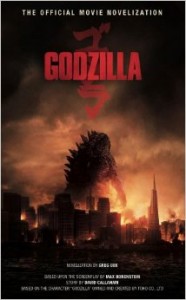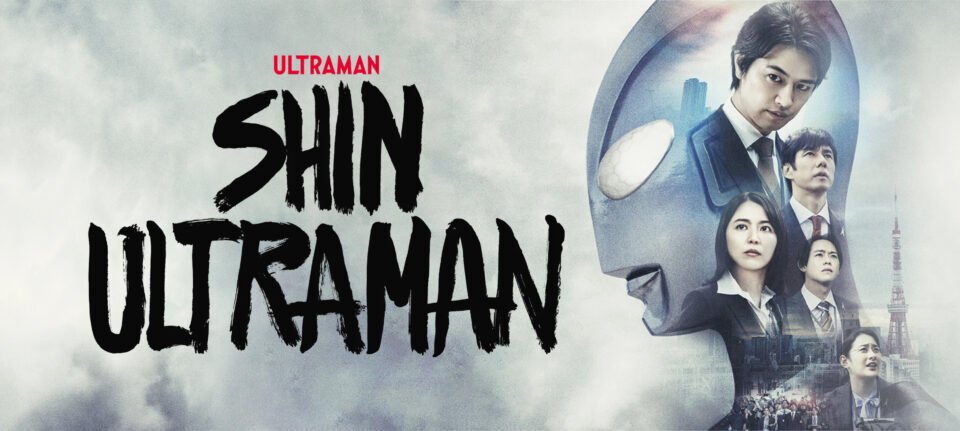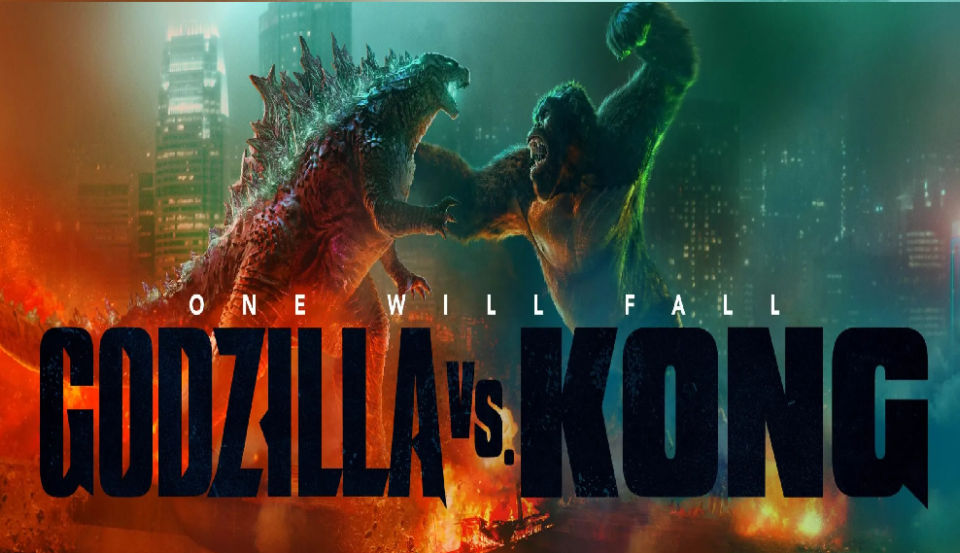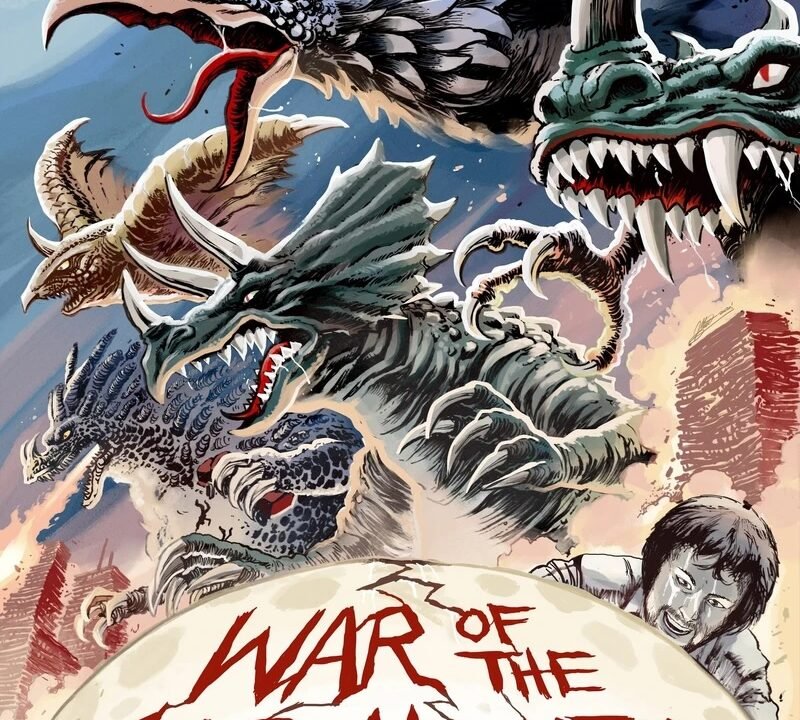DKN Podcast – Episode 78: Rebirth of Mothra 2
April 18, 2015DKN Podcast – Episode 79: Ultraman & Iron King
May 3, 2015 I have always been a fan of movie novelizations. I’ve read a number of them since grade school and have found that most enhance one’s experience of the movie in question.
I have always been a fan of movie novelizations. I’ve read a number of them since grade school and have found that most enhance one’s experience of the movie in question.
While some are nearly identical to the film itself, some are even radically different. Some are in between.
Godzilla, by Greg Cox, is one of the movie novelizations that lies in the middle between being nearly identical to the film and being radically different.
While the book retains much of the events in the order they happen in the film, the details of those events are different in some places.
Without giving away too much, as I feel that some of the most important parts of the book are different from the movie that they require any interested individual to read the novel to see the details, Godzilla uses his atomic breath several more times than he does in the actual movie–including the climatic battle between the two MUTOs.
Speaking of the climatic battle, the details of the battle itself are different; very different in some spots. A few of the events that happened in the film are in different order from how they occur in the novel. But what I found most intriguing about this final battle is that it is more violent than what we see on film. Many of the entanglements between Godzilla and any, or both, of the MUTOs is a straight-up battle-to-the-death moment. Many blows and brawls that take place in the book do not happen in the movie and that made for a highly entertaining climax!
What also makes movie novelizations a great companion to the movie is that we tend to get better characterizations. This is done, partially, due to not having to worry about a runtime and the fact that, through writing, we can get inside a character’s mind easier. Film can do that, but films have to walk a certain tightrope when trying to get into characters’ minds. It can come off as hokey and/or disturb the pacing of the film.
Cox gives us richer characters, particularly Ford. We get inside Joe, Elle, and Sam Brody more than the film, but Ford is the one who comes out better defined. Ford was the character that many fans thought was stale in the movie. Here, as a result of getting into his thoughts and Cox being able to expand on the story, Ford is better fleshed-out and comes across as a “better” father. (I use quotes there only because he never came across as a bad father in the movie. It’s just that he’s given more moments, through thoughts and circumstances, to display he is a soldier who deeply misses his wife and son.)
Getting into Sam’s mind at key moments was a treat. While Sam is four years old, it was great to see what a child thought of when these situations occurred.
Cox’s descriptions, too, of the events, and the kaiju, are absolutely beautiful! When Godzilla initially arrives in Honolulu, Cox’s description paints the King of the Monsters in wonderful prose that doesn’t set in on the finer details–only the important details. Cox does the same thing with the MUTOs and gives the reader rich descriptions every time any of the kaiju are in play.
The battles are just as beautifully choreographed in his writing. Cox will go into detail when significant blows are dealt to any of the kaiju and give the receiving kaiju’s reaction. It is difficult to describe as one needs to read the book to experience the well-written prose of these battles. One of my favorite moments was when Godzilla was going in for the kill on the female MUTO, but the winged male broke up Godzilla’s chance for the final blow. Cox briefly gets the reader inside Godzilla’s mind where we see a Godzilla that is irritated and pissed that the male prevented Godzilla from dealing the final blow. Then, in a short, yet powerful sentence, Cox tells us what Godzilla is thinking about the male MUTO: “The male would suffer.”
It was one of those mental fist-pumps. Moments, like that, are just as good as watching the film itself.
The book, however, does have flaws.
My main complaint of the novel is that there are many moments throughout, although most of them I spotted in the first third of the book, deal with missing words, words being combined, misspelled words (one word actually had a number in it), and either missed, or misplaced, punctuation.
I do not, though, blame Cox for these. Writers, who write novelizations, are under very tight schedules as they have to have the work done to coincide with the movie release. They are given weeks to a couple of months to write the novel and, therefore, have little to no time to proofread their own work.
But I would think that, maybe, the publisher would have the time? Again, time constraints play a huge factor here, but I would like to think that the publisher would have their editors look the work over before running it into publication.
Those errors, though, are just irritating. The first part of the book is the toughest to get through as that’s where most of the errors occur. It gets better as the book progresses, but they never go away. Not only does it reflect poorly on the author (in this case it shouldn’t given the short time frame authors have to work with in regards to writing novelizations), but it reflects on the overall product and story.
It messed with my reading pace in the first third of the book. It was so bad, at the beginning, that I nearly put the book down and never returned to it.
As I mentioned, though, it does get better. The errors are less frequent and makes for a smoother read.
Despite those errors, Greg Cox’s novelization of Godzilla is a must-read for fans of the movie! Cox’s prose is beautiful and his descriptions are some of the best I’ve ever read in a kaiju book. The book also contains events that never happened in the movie and even expands on other events. The characterization of Ford is rich and paints him as a deeper character than the film does.
It is highly recommended!




